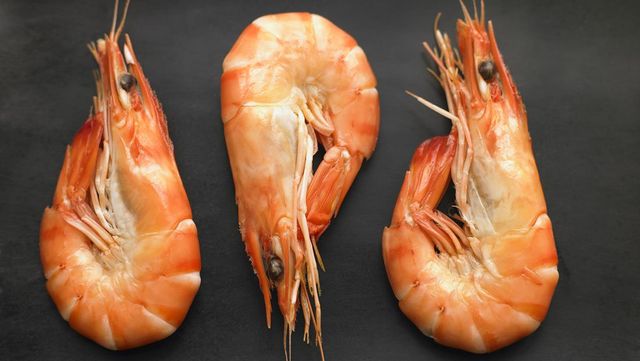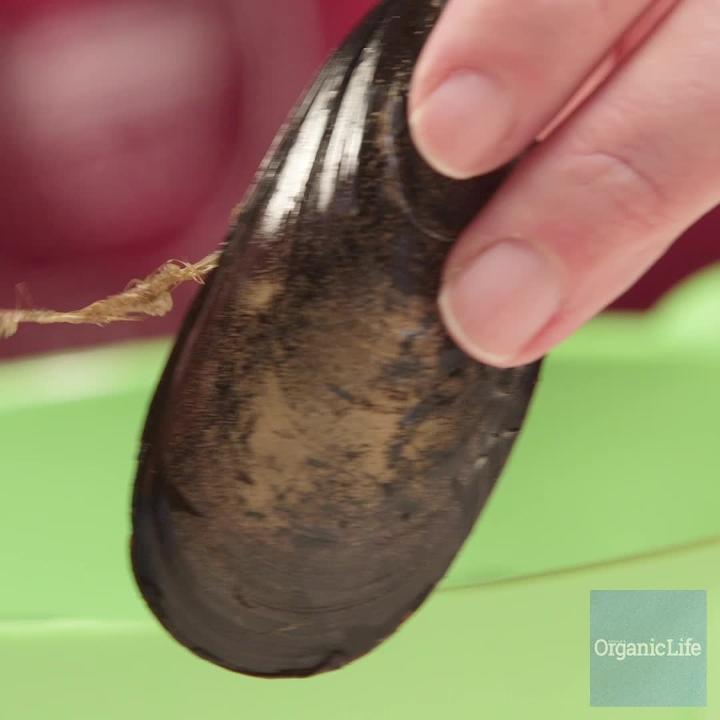This story originally appeared on Rodale’s Organic Life in July 2017.
Shrimp is the most popular seafood in the United States, but here's an unsettling fact that might keep you from ordering your next shrimp cocktail: 90 percent of the shrimp we eat has been imported, but less than 2 percent of that gets inspected by U.S. regulatory agencies.
What's the big deal? Imported shrimp, more than any other seafood, has been found to be contaminated with banned chemicals, pesticides, and even cockroaches, and it skirts food-safety authorities only to wind up on your plate. The number one reason for all that: the dirty conditions in which farmed shrimp are raised.
They're Filthy
Banned antibiotics aren't the only unwanted sides you get with imported shrimp. Previous tests have found penicillin, an antibiotic that, while legal, could trigger allergic reactions in unsuspecting shrimp-lovers. "Imported farmed shrimp comes with a whole bevy of contaminants: antibiotics, residues from chemicals used to clean pens, filth like mouse hair, rat hair, and pieces of insects," says Marianne Cufone, director of the fish program at the nonprofit Food and Water Watch. And that list doesn't include Salmonella and E. coli, both of which have been detected in imported shrimp. In fact, imported shrimp is so dirty that it accounts for 26 to 35 percent of all shipments of imported seafood that get rejected due to filth, according to Food & Water Watch.
Shrimp-Packing Plants Are Filthy, Too
A report published in the November 2012 issue of Bloomberg magazine revealed some truly disgusting facts about the conditions in which shrimp are packaged and shipped. At one particular facility in Vietnam, the magazine's reporters found processing-plant floors littered with garbage, flies buzzing around, and shrimp that wasn't being stored at proper temperatures. The shrimp itself was packed in ice made from local tap water, which public health authorities warned should be boiled before using due to microbial contamination, potentially exposing the shrimp (and eaters) to more bacterial contamination. According to Bloomberg, FDA inspectors have rejected 1,380 loads of seafood from Vietnam since 2007 for filth and salmonella, including 81 from the plant the reporters visited.
They're Full Of Cancer-Causing Chemicals
According to a 2011 Government Accountability Office report, the Food and Drug Administration (FDA) tested just 0.1 percent of imported seafood for chemical residues. Here's what the agency missed in that untested 99.9 percent: banned antibiotics that have the potential to cause cancer. Recently, ABC News recruited scientists from Texas Tech University's Institute of Environmental and Human Health to test 30 samples of shrimp purchased from grocery stores for the presence of three classes of antibiotics. Two samples of farm-raised (as opposed to wild) shrimp from India and Thailand tested positive for nitrofuranzone, an antibiotic that's a known carcinogen, at levels 28 and 29 times higher than those allowed by the FDA. Another antibiotic, chloramphenical, was detected at levels 150 times the legal limit. It's been banned in food production in the U.S. because of possible severe side effects such as aplastic anemia and leukemia.
One exposure to imported shrimp isn't likely to harm you, says study author Todd Anderson, PhD, professor of environmental toxicology. "It's the potential for chronic exposure that we're most concerned about."
They're Exacerbating Climate Change
More often than not, these nonnative shrimp are raised in farms, rather than being caught wild. Shrimp farms, essentially huge underwater pens, are built along coastlines, and to make room for them, shrimp farmers have to destroy native mangrove forests that provide a buffer against hurricanes and flooding. Scientists from the U.S. Department of Agriculture have found that mangrove forests absorb and trap more climate-changing carbon dioxide than any other ecosystem on the planet, including rainforests. Yet, over the past 50 years, anywhere from 5 to 80 percent of the mangrove forests in Thailand, Ecuador, Indonesia, China, Mexico, and Vietnam (the five leading shrimp-farming countries) have been destroyed to make room for more coastal shrimp farms.
They're Making The Rest Of The Seafood Menu A Lot Smaller
Those mangrove forests do more than just trap carbon dioxide. They provide vital habitats for other commercial seafood species that are important to local economies, including snapper, wild tilapia, sea bass, oysters, and crabs. According to Food & Water Watch, roughly 70 percent of commercially valuable seafood species in Ecuador, Honduras, and Mexico and 33 percent in Southeast Asia are dependent on mangrove forests, and for each acre destroyed, 675 pounds of commercial fish are lost.
Many Domestic Options Aren't Great Either
By this point, you're probably thinking that imported shrimp may be disgusting, but domestic shrimp could be tainted with oil. The U.S. wild shrimp market did take a serious hit after the 2010 BP oil spill shut down dozens of shrimp fisheries in the Gulf of Mexico for a year. The shrimp populations there are still recovering, but money has been flowing into a seafood-testing program overseen by the National Oceanic and Atmospheric Administration, which is partnering with the FDA and testing not just for oil but also for residues of Corexit, the chemical dispersant used during the spill.
One concern: Scientists from the Natural Resources Defense Council, another environmental nonprofit, have criticized the residue limits for oil and Corexit that the government is using, suggesting that they're not low enough to protect pregnant women and their unborn children. If you are pregnant, you always have the option of U.S. shrimp from the Pacific Northwest, which are available from the reputable online seafood retailer Vital Choice.













